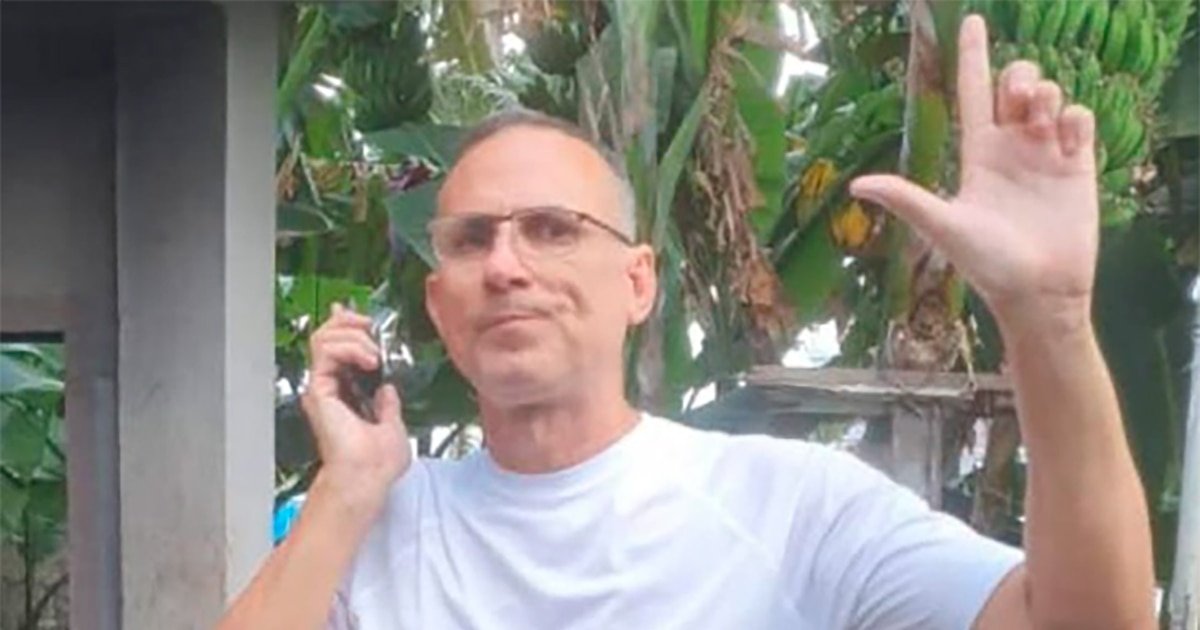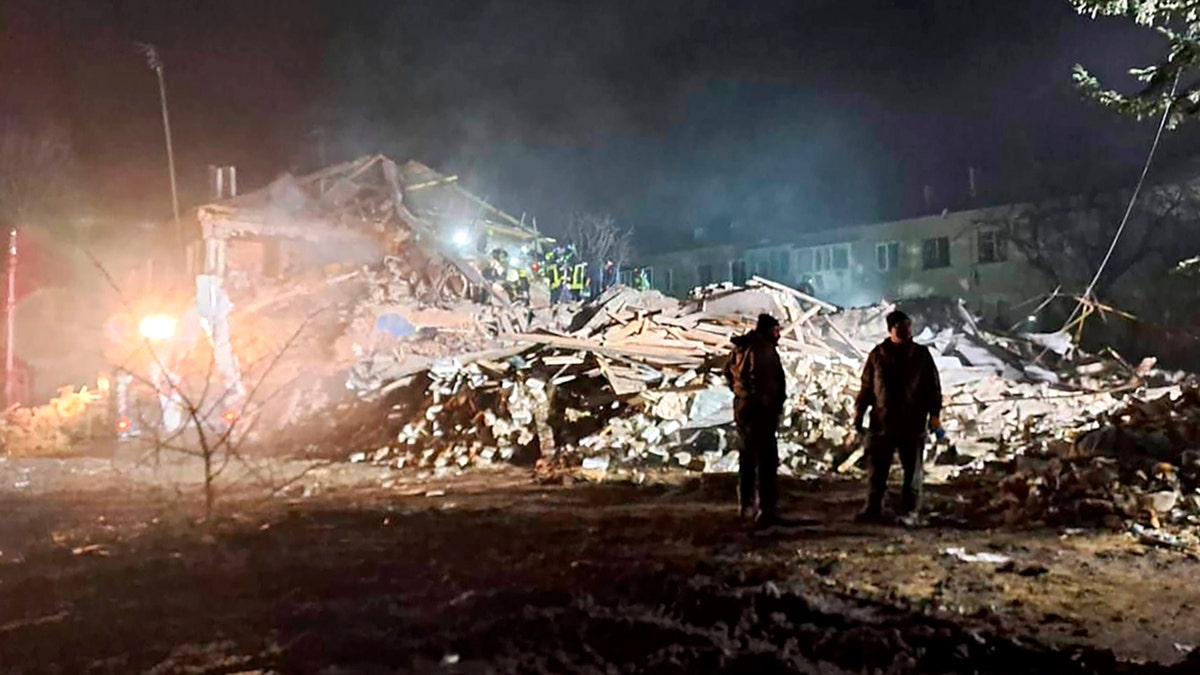INTERNACIONAL
Los riesgos de los alimentos ultraprocesados: por qué están cada vez más bajo la lupa de los científicos

(Imagen ilustrativa Infobae)
Desde hace más de cinco décadas se habla de la “comida chatarra”. Este término incluye productos como golosinas, snacks salados y dulces, sopas instantáneas, bebidas azucaradas y energéticas, hamburguesas, salchichas y nuggets procesados, entre otros.
Ahora el consumo de ese tipo de alimentos, llamados ultraprocesados, está bajo la lupa de los científicos porque hay pruebas sólidas sobre sus efectos perjudiciales en la salud humana.
Pueden aumentar el riesgo de sufrir diferentes enfermedades, desde infartos hasta depresión, y hasta acortar el tiempo de vida.

(Imagen Ilustrativa Infobae)
Una de las últimas evidencias preocupantes surgió de un estudio publicado en la revista American Journal of Preventive Medicine por investigadores de Brasil, México, Colombia, Chile, Australia y Canadá.
Estimaron que entre el 4% y el 14% de las muertes en adultos de 30 a 69 años se podrían atribuir al consumo excesivo de los ultraprocesados, con variaciones según el país.
El equipo estuvo liderado por Eduardo Nilson, de la Fundación Oswaldo Cruz, en Brasil y analizó datos dietéticos y de mortalidad de Colombia, Brasil, Chile, México, Estados Unidos, Reino Unido, Canadá y Australia.
En tanto, otra investigación destacó que los alimentos procesados, especialmente los ultraprocesados, son un vector importante de exposición a los químicos sintéticos.

(Imagen Ilustrativa Infobae)
Plaguicidas, aditivos, plásticos y químicos de contacto con alimentos pueden estar presentes en materiales de empaque y procesamiento.
Los microplásticos y los nanoplásticos surgen del uso de utensilios, envases y materiales plásticos de contacto con alimentos, señalaron en el artículo de revisión publicado en la revista Nature Medicine.
“Los ultraprocesados aún reciben muy poca atención respecto a sus contaminantes químicos sintéticos y los impactos asociados en la salud”, afirmó el equipo liderado por Jane Muncke, doctora en toxicología ambiental por la universidad pública ETH y directora científica del Foro de Envases Alimentarios en Suiza, que fue entrevistada por Infobae.

(Freepik)
Como ahora se conoce más sobre el impacto en la salud, es crucial entender qué se considera hoy un alimento ultraprocesado.
“Contienen ingredientes o se elaboran con métodos de procesamiento que no están tradicionalmente disponibles en las cocinas de los hogares de las personas”, contestó la doctora Muncke.
Son alimentos industrializados que suelen incluir saborizantes artificiales, productos químicos sintéticos que actúan como aditivos alimentarios, y niveles más altos de azúcar, sal y grasa en comparación con los alimentos naturales.
Se elaboran con ingredientes altamente refinados. “Durante ese proceso se eliminan muchos componentes naturales beneficiosos para la salud”, resaltó.

Los ingredientes de los ultraprocesados habitualmente incluyen azúcares, aceites, grasas o sal; ingredientes extraídos de alimentos, como la caseína, la lactosa, el suero de la leche; y aditivos como conservantes, colorantes, saborizantes, explicó a Infobae Victoria Tiscornia, magíster en nutrición e investigadora de la organización no gubernamental FIC Argentina.
Dentro de la categoría se encuentran estos productos: snacks salados y dulces, galletitas, golosinas, helados, productos de panadería industrial, cereales azucarados, barras de cereal, salsas y sopas instantáneas, platos listos para comer, carnes procesadas, quesos y yogures saborizados, bebidas azucaradas y energéticas, detalló la experta argentina.

Existe la clasificación NOVA, que fue desarrollada por el doctor Carlos Monteiro, uno de los autores del estudio mencionado de la revista American Journal of Preventive Medicine. Ya adoptada en varios países y agrupa los alimentos según la naturaleza, el grado y el propósito del procesamiento industrial que sufren.
Hay cuatro grupos según el sistema NOVA. Un grupo está integrado por los alimentos no procesados o mínimamente procesados, como tomate, leche o pollo.
El segundo grupo son los ingredientes culinarios procesados, es decir, sustancias derivadas de los alimentos del grupo 1 o de la naturaleza por procesos de prensado, refinado, molido, molienda y secado (como por ejemplo manteca o aceite).

(Imagen Ilustrativa Infobae)
En el grupo tres se incluyen a los alimentos procesados, y el cuatro a los alimentos ultraprocesados. “A partir de esa clasificación se puede diferenciar a un alimento procesado de uno ultraprocesado. Los alimentos procesados son alimentos naturales (grupo 1) con agregado de ingredientes culinarios (grupo 2)”, dijo.
Detalló estos ejemplos de procesados: panes, quesos, yogur natural con azúcar, enlatados de frutas y verduras, frutos secos con azúcar o sal.
“Los ultraprocesados, en cambio, tienen poco o ningún alimento intacto del grupo 1″, afirmó.

Crédito Fundación Mundial de la Obesidad
“La evidencia científica muestra cuatro vínculos confiables entre el aumento en el consumo de alimentos ultraprocesados y resultados adversos para la salud”, contestó desde Suiza la doctora Muncke:
- Aumentan el riesgo de desarrollar enfermedades cardiovasculares
- Suben el riesgo de tener obesidad
- Producen mortalidad prematura
- Favorecen el desarrollo de padecer trastornos mentales, como depresión

También se sabe que “los alimentos ultraprocesados contienen niveles más altos de productos químicos plásticos peligrosos y microplásticos”, expresó.
Por ejemplo -enfatizó- “el bisfenol A y el DEHP (di(2-etilhexil) causan problemas de salud similares a los observados con los alimentos ultraprocesados. Por lo que podría haber un vínculo entre los químicos sintéticos en esos alimentos y la salud que necesita ser investigado más a fondo”.
Tiscornia también mencionó que el consumo de ultraprocesados en etapas tempranas de la vida “interfieren con el desarrollo de preferencias por alimentos naturales”.

(Imagen Ilustrativa Infobae)
Bebés, niños y adolescentes se acostumbran a sabores intensos, muy salados, azucarados o artificiales que no se encuentran naturalmente en los alimentos frescos.
“Puede generar una menor aceptación y desplazamiento de otros grupos de alimentos como frutas, verduras y otras preparaciones caseras. De esta manera se hace más difícil el desarrollo de hábitos saludables”, apuntó.

(Freepik)
Para la doctora Muncke, se debería reducir el consumo de los alimentos ultraprocesados. “No deberían formar parte de una dieta diaria, sino reservarse para ocasiones especiales y consumirse de manera consciente”, aclaró.
“Una alimentación diaria con ingredientes mínimamente procesados, de origen local y de temporada, es lo mejor para la salud y el planeta”, dijo.
El problema de la exposición a la comida insalubre también atañe a los gobiernos. Se requiere una combinación de medidas recomendadas por expertos en salud pública, como la regulación de la comercialización y publicidad de productos alimenticios poco saludables.

También se deben establecer políticas de precios para hacer que los alimentos saludables, no procesados y orgánicos sean asequibles y accesibles, puntualizó la investigadora suiza.
Es clave que los alimentos saludables se conviertan en la opción más fácil y espontánea para todos, y se ayudará a reducir las desigualdades sociales en salud.
También Muncke aconsejó que cada país debe contar con un etiquetado claro de los alimentos para guiar a los consumidores hacia opciones más saludables; políticas eficaces para reducir el uso de plaguicidas y el daño ambiental; y la prohibición de los productos químicos más tóxicos en plásticos, como los bisfenoles y los ftalatos.
big,bun,burger,calorie,corpulent,eat,eating,fast,fast food,fat,female,food,healthy,junk,junk food,lifestyle,meal,obese,obesity,overeating,overweight,people,person,poor nutrition,problem,ravenous,snack,sweet,tasty,unhealthy,weight,woman
INTERNACIONAL
Año Nuevo 2026: un minuto de silencio por la masacre en Sídney pone el cierre a un 2025 marcado por el regreso de Trump y la guerra

Labubus y robos espectaculares
Mundial y misiones espaciales
INTERNACIONAL
José Daniel Ferrer: “Cuba termina el año en uno de los momentos más duros de su historia”

El opositor cubano José Daniel Ferrer, líder de la Unión Patriótica (UNPACU), envió este miércoles un mensaje a Infobae en el que afirmó que «Cuba termina el año 2025 atravesando uno de los momentos más duros de su historia“.
En su balance anual, el disidente expuso un panorama de opresión, hambre, apagones interminables y represión política, al tiempo que instó a la ciudadanía a asumir una postura activa y pacífica para evitar que el año entrante se repita la misma realidad.
Ferrer señaló que la isla afronta una coyuntura marcada por la crisis epidemiológica y sanitaria, el aumento de presos políticos, abusos en las prisiones y un éxodo constante de ciudadanos que buscan mejores condiciones fuera del país. “Nada de esto es accidente. Nada de esto es inevitable. Y nada de esto debe continuar”, afirmó el líder opositor, quien se encuentra en el exilio desde octubre pasado tras pasar años en prisión.
El mensaje detalló 10 pasos que deberían guiar a la sociedad cubana durante 2026. El primer punto alude a la necesidad de desmarcarse de las estructuras de control creadas por el régimen, como los Comités de Defensa de la Revolución (CDR), la Federación de Mujeres Cubanas (FMC), la Central de Trabajadores de Cuba (CTC) y otras organizaciones consideradas instrumentos para la represión social. Ferrer llamó a no participar en actos políticos ni actividades que busquen simular apoyo popular a la dictadura de Miguel Díaz-Canel.

El segundo aspecto planteado es la negativa a colaborar con la represión. “No reprimir a nadie. No delatar a quienes defienden pacíficamente los derechos humanos. Recordar siempre que ningún cubano debe ser enemigo de otro cubano”, expresó.
Un tercer punto hace hincapié en debilitar sin violencia las bases económicas de la opresión. El líder de la UNPACU exhortó a evitar financiar al régimen y priorizar la compra de bienes y servicios a ciudadanos independientes o neutrales.
Ferrer insistió en la importancia de fortalecer la sociedad civil libre mediante la creación y el apoyo a organizaciones cívicas, humanitarias, sindicales, artísticas y comunitarias independientes, así como en el respaldo a presos políticos y al periodismo independiente.
Otro de los puntos subrayó la urgencia de denunciar y documentar toda injusticia, compartiendo testimonios con organizaciones de derechos humanos y plataformas cívicas, siempre priorizando la seguridad de las personas involucradas. “Denunciar toda injusticia, abuso, violación a los derechos humanos y realidad que afecte a nuestro pueblo”, remarcó en el mensaje enviado a Infobae.
El escrito también propone acciones cívicas y no violentas para expresar el rechazo a la injusticia, y fomentar la creatividad y valentía en la resistencia. A quienes viven fuera de Cuba, Ferrer recomienda apoyar a sus familias, evitando al mismo tiempo financiar las estructuras económicas del Estado.
La unidad, la fraternidad y la solidaridad entre cubanos, el respaldo a artistas y comunicadores que defienden la libertad, y el apoyo mutuo en redes sociales y espacios públicos son otros de los ejes destacados.
En el plano internacional, pidió visibilizar la situación de Cuba en organismos como la ONU y la Unión Europea; y solicitó el apoyo de gobiernos democráticos.

Ferrer cerró con un llamado a preparar el futuro mediante la defensa de un liderazgo ético y no violento, el aumento del activismo humanitario y la promoción de paros y huelgas discretas como vía para alcanzar una huelga general que ponga fin a la dictadura. “Si asumimos con valentía y responsabilidad este camino cívico, solidario y no violento, si dejamos de sostener aquello que nos oprime y fortalecemos lo que nos dignifica, antes de que termine el 2026 podremos abrir el camino a la reconstrucción nacional”, aseguró el líder opositor.
Por último, hizo un llamado a la acción y a la esperanza de un país libre. “Podremos aspirar a una Cuba libre, justa y próspera; una Cuba ‘con todos y para el bien de todos’, como soñó Martí, como han deseado generaciones de cubanos dignos y como merecemos todos. La patria nos llama. El futuro depende de lo que hagamos hoy. Viva Cuba libre», concluyó.
INTERNACIONAL
Ukraine–Russia at a crossroads: How the war evolved in 2025 and what comes next

NEWYou can now listen to Fox News articles!
President Donald Trump spent much of 2025 attempting what had eluded his predecessors: personally engaging both Russian President Vladimir Putin and Ukrainian President Volodymyr Zelenskyy in an effort to bring an end to the war in Ukraine. From high-profile summits to direct phone calls, the administration pushed for a negotiated settlement even as the fighting ground on and the map changed little.
By year’s end, the outlines of a potential deal were clearer than they had been at any point since Russia’s full-scale invasion, with U.S. and Ukrainian officials coalescing around a revised 20-point framework addressing ceasefire terms, security guarantees and disputed territory. But 2025 also made clear why the war has proven so resistant to resolution: neither battlefield pressure, economic sanctions nor intensified diplomacy were enough to force Moscow or Kyiv into concessions they were unwilling to make.
The Trump administration’s push for a deal
The year began with a high-profile fallout last February between President Donald Trump, Vice President JD Vance and Ukrainian President Volodymyr Zelenskyy, when the Ukrainian leader stormed out of the White House after Trump told him he did not have «any cards» to bring to negotiations with Russia.
Frustrated by the pace of talks after promising to end the war on «Day One» of his presidency, Trump initially directed his ire toward Zelenskyy before later conceding that Moscow, not Kyiv, was standing in the way of progress.
«I thought the Russia-Ukraine war was the easiest to stop but Putin has let me down,» Trump said in September 2025.
President Donald Trump met multiple times with Ukrainian President Volodymyr Zelenskyy throughout 2025. (Ukranian Presidency / Handout/Anadolu via Getty Images)
That frustration had already surfaced publicly months earlier as Russian strikes continued despite diplomatic engagement. «He talks nice and then he bombs everybody in the evening,» Trump said in July.
Trump’s outreach to Russian President Vladimir Putin culminated in a high-profile summit in Alaska in August, though additional meetings were later called off amid a lack of progress toward a deal.
ZELENSKYY ENCOURAGED BY ‘VERY GOOD’ CHRISTMAS TALKS WITH US
Still, Trump struck a more optimistic tone toward the end of the year. On Sunday, after meeting Zelenskyy at Mar-a-Lago, the president said the sides were «getting a lot closer, maybe very close» to a peace agreement, while acknowledging that major obstacles remained — including the status of disputed territory such as the Donbas region, which he described as «very tough.»
Trump said the meeting followed what he described as a «very positive» phone call with Putin that lasted more than two hours, underscoring the administration’s continued effort to press both sides toward a negotiated end to the war.
Where negotiations stand now
By the end of 2025, the diplomatic track had narrowed around a more defined — but still contested — framework. U.S. officials and Ukrainian negotiators have been working from a revised 20-point proposal that outlines a potential ceasefire, security guarantees for Ukraine, and mechanisms to address disputed territory and demilitarized zones.
Zelenskyy has publicly signaled openness to elements of the framework while insisting that any agreement must include robust, long-term security guarantees to deter future Russian aggression. Ukrainian officials have also made clear that questions surrounding occupied territory, including parts of the Donbas, cannot be resolved solely through ceasefire lines without broader guarantees.
Russia, however, has not agreed to the proposal. Moscow has continued to insist on recognition of its territorial claims and has resisted terms that would constrain its military posture or require meaningful concessions. Russian officials have at times linked their negotiating stance to developments on the battlefield, reinforcing the Kremlin’s view that leverage — not urgency — should dictate the pace of talks.

«I thought the Russia-Ukraine war was the easiest to stop but Putin has let me down,» Trump said in September 2025. (Getty Images/ Andrew Harnik)
The result is a negotiation process that is more structured than earlier efforts, but still far from resolution: positions have hardened even as channels remain open, and talks continue alongside ongoing fighting rather than replacing it.
Russia’s territorial pressure — and Ukraine’s limited gains
Even as diplomacy intensified in 2025, the war on the ground remained defined by slow, grinding territorial pressure rather than decisive breakthroughs. Russian forces continued pushing for incremental gains in eastern and southern Ukraine, particularly along axes tied to Moscow’s long-stated objective of consolidating control over territory it claims as Russian.
Russian advances were measured and costly, often unfolding village by village through artillery-heavy assaults and sustained drone use rather than sweeping offensives. While Moscow failed to capture major new cities or trigger a collapse in Ukrainian defenses, it expanded control in parts of eastern and southern Ukraine, maintaining pressure across multiple fronts and keeping territorial questions central to both the fighting and any future negotiations.

U.S. President Donald Trump speaks with Russian President Vladimir Putin, as they meet to negotiate for an end to the war in Ukraine, at Joint Base Elmendorf-Richardson in Anchorage, Alaska, U.S., August 15, 2025. (REUTERS/Kevin Lamarque)
Ukraine, for its part, did not mount a large-scale counteroffensive in 2025 comparable to earlier phases of the war. Ukrainian forces achieved localized tactical successes, at times reclaiming small areas or reversing specific Russian advances, but these gains were limited in scope and often temporary. None translated into a sustained territorial breakthrough capable of altering the broader balance of the front.
Instead, Kyiv focused on preventing further losses, reinforcing defensive lines, and imposing costs on Russian forces through precision strikes and asymmetric tactics. With decisive territorial gains out of reach, Ukraine expanded attacks against Russian energy infrastructure, targeting refineries, fuel depots and other hubs critical to sustaining Moscow’s war effort — including sites deep inside Russian territory.
ZELENSKYY SAYS FRESH RUSSIAN ATTACK ON UKRAINE SHOWS PUTIN’S ‘TRUE ATTITUDE’ AHEAD OF TRUMP MEETING
Russia, meanwhile, continued its own campaign against Ukraine’s energy grid, striking power and heating infrastructure as part of a broader effort to strain Ukraine’s economy, civilian resilience and air defenses. The result was a widening pattern of horizontal escalation, as both sides sought leverage beyond the front lines without achieving a decisive military outcome.
The result was a battlefield stalemate with movement at the margins: Russia advanced just enough to sustain its territorial claims and domestic narrative, while Ukraine proved capable of blunting assaults and imposing costs but not of reclaiming large swaths of occupied land. The fighting underscored a central reality of 2025 — territory still mattered deeply to both sides, but neither possessed the military leverage needed to force a decisive shift.

Firefighters surveying the scene from Russia’s missile attack on the Kharkiv Region in Ukraine. (Kharkiv Regional Governor Oleh Sunyiehubov Office/ via AP)
That dynamic would increasingly shape the limits of diplomacy. Without a major change on the battlefield, talks could test red lines and clarify positions, but not compel compromise.
Why talks stalled: leverage without decision
For all the diplomatic activity in 2025, negotiations repeatedly ran into the same obstacle: neither Russia nor Ukraine faced the kind of pressure that would force a decisive compromise.
On the battlefield, Russia continued to absorb losses while pressing for incremental territorial gains, reinforcing Moscow’s belief that time remained on its side. Ukrainian forces, though increasingly strained, succeeded in preventing a collapse and in imposing costs through deep strikes and attacks on Russia’s energy infrastructure — demonstrating an ability to shape the conflict even without major territorial advances.
Economic pressure also reshaped — but did not determine — Moscow’s calculus. Despite years of Western sanctions, Russia continued financing its war effort in 2025, ramping up defense production and adapting its economy to sustain prolonged conflict. While sanctions constrained growth and access to advanced technology, they raised the long-term costs of the war without producing the immediate pressure needed to force President Vladimir Putin toward concessions.

Ukrainian servicemen of the 44th artillery brigade fire a 2s22 Bohdana self-propelled howitzer towards Russian positions at the frontline in the Zaporizhzhia region, Ukraine, Wednesday, Aug. 20, 2025. (Danylo Antoniuk/AP Photo)
CLICK HERE TO DOWNLOAD THE FOX NEWS APP
Those realities defined the limits of U.S. mediation. While the Trump administration pushed both sides to clarify red lines and explore possible frameworks for ending the war, Washington could illuminate choices without dictating outcomes, absent a decisive shift on the ground or a sudden change in Moscow’s calculations.
The result was a year of talks that clarified positions without closing gaps. As long as pressure produced pain without decision, negotiations could narrow options and define boundaries, even if they could not yet bring the conflict to an end.
russia,ukraine,world,vladimir putin,volodymyr zelenskyy,foreign policy,wars,donald trump

 SOCIEDAD2 días ago
SOCIEDAD2 días agoCalor extremo en el AMBA: cuándo la temperatura rozará los 40 grados

 ECONOMIA3 días ago
ECONOMIA3 días agoCalendario de pagos de ANSES de enero 2026: cuándo cobran jubilados, pensionados y beneficiarios de planes sociales

 POLITICA3 días ago
POLITICA3 días agoPatricia Bullrich destacó la aprobación del Presupuesto 2026 y la ruptura del peronismo en el Senado






























